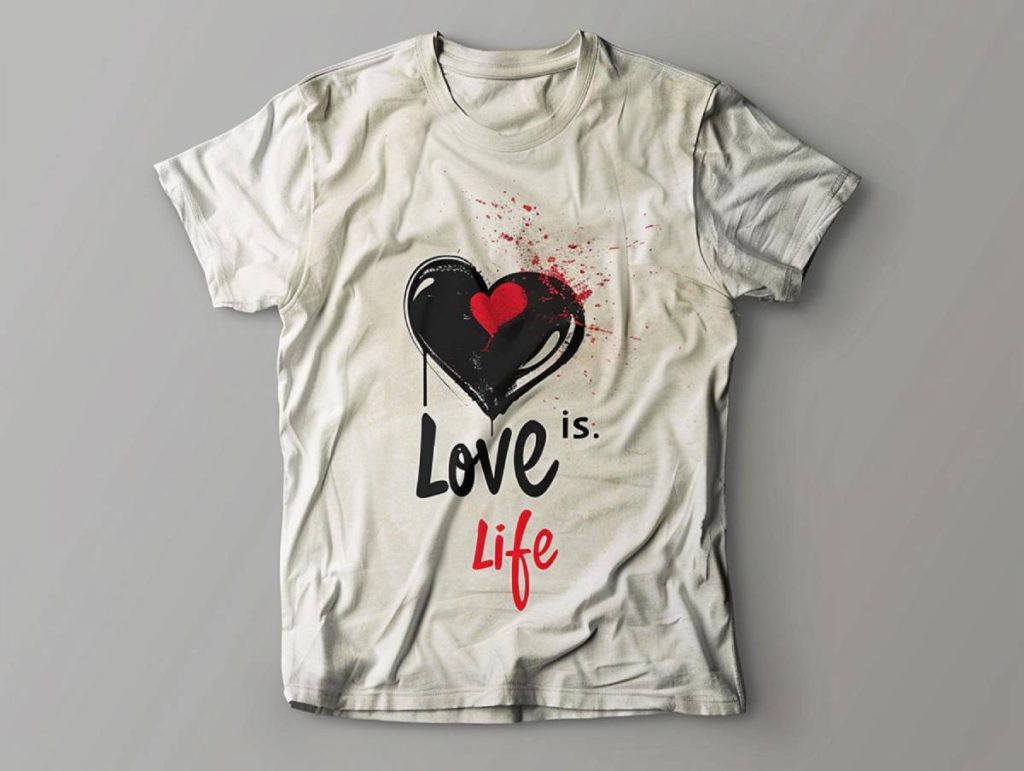UV DTF, or Ultraviolet Digital Transfer Film, is a pioneering technology in the realm of modern printing solutions. With the rising demand for high-resolution prints that maintain color vibrancy and durability, UV DTF has emerged as a game-changer for various industries. This innovative approach integrates UV printing technology with digital transfer film methods, ensuring a seamless process that is both efficient and eco-friendly. By curing inks using ultraviolet light instead of solvents, UV DTF not only provides superior print quality but also aligns with today’s environmental standards. As we explore the intricate mechanics behind UV DTF, its distinct advantages will unveil a new standard in printing that meets the needs of sustainability-focused businesses.
The advent of ultraviolet digital transfer film technology signifies a transformative phase in the field of printing. Often referred to as eco-friendly printing, this method enables printers to produce high-quality graphics on diverse substrates while minimizing harmful emissions. With features that allow for sharp, long-lasting designs, this digital transfer process opens up numerous avenues for branding and personalization. As companies increasingly search for effective printing solutions that combine quality with environmental consciousness, the burgeoning popularity of UV DTF becomes evident. In this article, we will delve deeper into the workings of this technology and its implications for modern printing practices.
Understanding the Principles of UV DTF Technology
UV DTF, or Ultraviolet Digital Transfer Film, revolutionizes the concept of printing by integrating UV printing technology with innovative transfer methods. At its core, UV DTF employs a unique process that allows for vivid, detailed prints on numerous substrates, including textiles, ceramics, and synthetics. This technology departs from conventional printing solutions that often rely on solvent-based inks, thus providing a more environment-friendly approach. When we speak of eco-friendly printing, UV DTF stands out as it drastically reduces the release of volatile organic compounds (VOCs) during the printing process.
The underlying principles of UV DTF pivot around the use of ultraviolet light to cure specialized inks almost instantaneously. This curing technique not only ensures lasting adhesion of colors onto various surfaces but also significantly increases production efficiency. Businesses across different sectors are turning to UV DTF for its adaptability, making it an appealing choice in industries requiring high-resolution prints, rapid turnaround times, and sustainable practices.
The Process of UV DTF Printing
The UV DTF printing process involves several meticulous stages that contribute to its final output. Initially, the design is digitally printed onto a specially engineered transfer film using UV inks. As the printing process progresses, the printed film is subjected to UV light, which instantly cures the ink. This immediate curing process is vital as it prevents smudging while ensuring a vibrant finish that is not commonly achievable with traditional printing methods. By contrast, the traditional systems often require longer drying times, leading to delays that can hinder business operations.
Once the ink is cured, the transfer film is applied to the desired substrate through heat and pressure techniques. This step ensures that the print adheres flatly and securely on the material. Finally, an additional UV light exposure can further reinforce the durability of the print. The layered approach of this process exemplifies how UV DTF combines efficiency with quality, allowing manufacturers to achieve remarkable results across a spectrum of applications.
Benefits of Choosing UV DTF Technology
Adopting UV DTF technology brings numerous advantages compared to conventional printing solutions. A primary benefit is the enhanced quality of prints, which showcases brilliant color reproduction and intricate designs that are accentuated through UV curing. This capability appeals to businesses aiming to deliver high-resolution prints to their customers, providing a competitive edge in visual appeal. Durability is another standout feature; UV-cured prints resist fading, scratching, and moisture damage, making them ideal for outdoor and high-traffic applications.
Moreover, UV DTF represents a significant step towards sustainability in the printing industry. By eliminating solvent-based inks and reducing harmful emissions, this technology aligns with global initiatives aiming for eco-friendly printing practices. This eco-conscious approach not only satisfies regulations but resonates with consumers increasingly concerned about environmental impact, fostering a positive brand image and customer loyalty.
Exploring Versatility in UV DTF Applications
One of the most compelling attributes of UV DTF technology is its versatility across various materials and industries. Whether applied to wood, metal, glass, or fabric, UV DTF demonstrates exceptional adaptability. This range of applications makes it a go-to solution for businesses producing customized products, promotional items, and personalized gifts. The ability to print on diverse substrates without compromising quality is crucial for companies seeking to diversify their offerings.
Additionally, the technology supports the trend of on-demand printing, allowing businesses to fulfill unique customer requests promptly. Customization can enhance consumer engagement and satisfaction, creating a business model that is both relevant and innovative. By leveraging UV DTF’s capabilities, companies can meet the growing demand for tailored experiences in today’s marketplace, an essential aspect of staying competitive.
Current Trends in UV DTF Technology
As the landscape of UV DTF technology evolves, several trends are shaping its future. One prominent trend is the continuous improvement in ink formulations, enhancing adhesion properties that allow for better adherence to a wider array of materials. This development expands the scope of applications for UV DTF, facilitating its use on challenging substrates such as synthetic fabrics and metals, which were previously difficult to print on.
In addition to ink enhancements, advancements in printer technology are leading to faster printing speeds without compromising on quality. Manufacturers are innovating to streamline processes, effectively meeting market demands for quicker turnaround times. This focus on efficiency enables businesses to capitalize on popular trends, such as limited edition releases and seasonal designs, thereby maximizing profitability.
The Future of UV DTF in Printing Solutions
Looking ahead, the future of UV DTF technology seems bright as industries increasingly recognize the value of innovation in printing solutions. With a shift towards sustainability, UV DTF’s eco-friendly profile aligns well with modern consumer mindsets, positioning the technology favorably for widespread adoption. Furthermore, as digital transformation continues to influence various sectors, the demand for high-quality, customized printing solutions will only grow, driving advancements in UV DTF technology.
As we adapt to changing market dynamics, understanding emerging technologies will be pivotal for businesses aiming to harness the potential of UV DTF. Companies that invest in this technology will not only benefit from its current advantages but will also be at the forefront of the next generation of printing solutions, maintaining competitiveness within a rapidly evolving landscape.
Frequently Asked Questions
What is UV DTF and how does it differ from traditional printing?
UV DTF stands for Ultraviolet Digital Transfer Film, a cutting-edge printing technology that uses UV inks cured by ultraviolet light. Unlike traditional printing methods that may rely on solvents and inks that take longer to dry, UV DTF allows for immediate curing, resulting in high-resolution prints that are vibrant and durable.
What are the main benefits of using UV DTF for printing solutions?
UV DTF offers several advantages, including exceptional print quality with vivid colors, impressive durability against various environmental factors, and an eco-friendly approach that minimizes VOC emissions. This technology is versatile, making it suitable for a wide range of materials and applications.
How does the UV DTF printing process work?
The UV DTF process involves four key steps: preparing the design, printing on a special transfer film with UV inks, curing the ink instantly with UV light to solidify it, and transferring the cured design onto the desired substrate using heat and pressure. This method ensures brilliant and long-lasting prints.
Is UV DTF technology considered eco-friendly?
Yes, UV DTF technology is considered eco-friendly due to its use of UV inks that eliminate solvents and reduce volatile organic compounds (VOCs) in the printing process. This makes it a greener option compared to many traditional printing methods and aligns with sustainable printing practices.
What types of substrates can UV DTF be applied to?
UV DTF can be applied to a wide variety of substrates, including textiles, plastics, metals, and wood. Its versatility allows it to be used in diverse industries such as fashion, home decor, and promotional products, making it an ideal choice for custom and personalized printing.
How has UV DTF technology evolved in recent years?
Recent developments in UV DTF technology include improved ink formulations for better adhesion on different materials, faster printing speeds to enhance productivity, and increased capabilities for personalized and on-demand printing. These advancements have made UV DTF a leading solution in the printing industry.
| Key Points | ||
|---|---|---|
| Introduction to UV DTF Technology | What is UV DTF? | How UV DTF Works |
| UV DTF combines digital transfer methods with UV curing for efficient and sustainable printing. | Utilizes UV light to cure prints on various substrates, offering high quality and durability. | Involves print preparation, UV ink curing, transfer process, and final curing for durability. |
| Advantages of UV DTF Technology | Current Developments and Trends in UV DTF | Conclusion |
| High print quality, durability, eco-friendly, and versatility are key benefits. | Improvements in ink formulations, faster printing speeds, and personalized printing are notable trends. | UV DTF technology is shaping the future of printing with its efficiency and environmental sustainability. |
Summary
UV DTF is a groundbreaking technology that merges traditional printing with advanced digital methods to create superior print quality. It provides businesses with sustainable and versatile solutions, enabling them to cater to various materials and industries. This technology not only enhances the vibrancy and durability of prints but also minimizes environmental impact, making UV DTF an essential player in the future of printing. As advancements continue, UV DTF is poised to transform the landscape of modern printing, fulfilling the evolving demands of customers.



